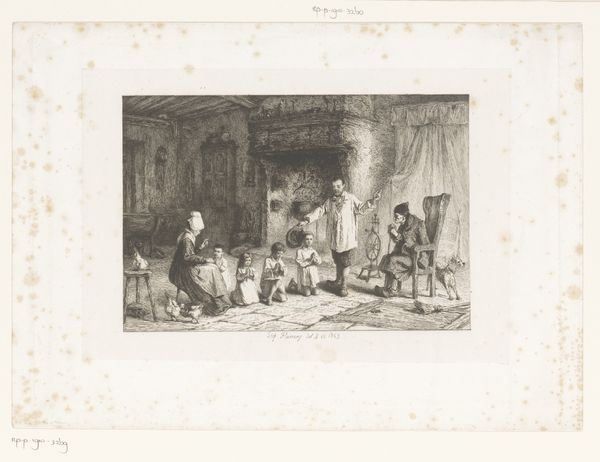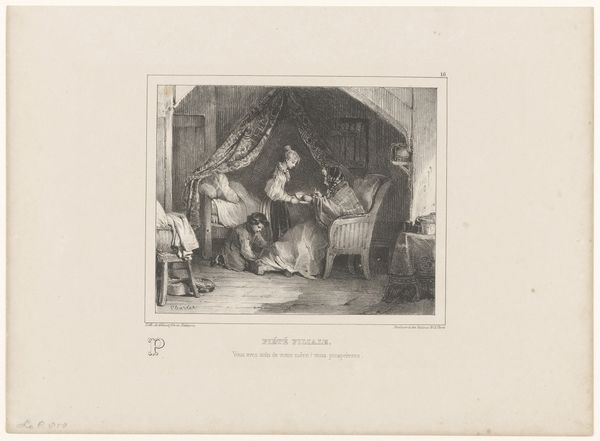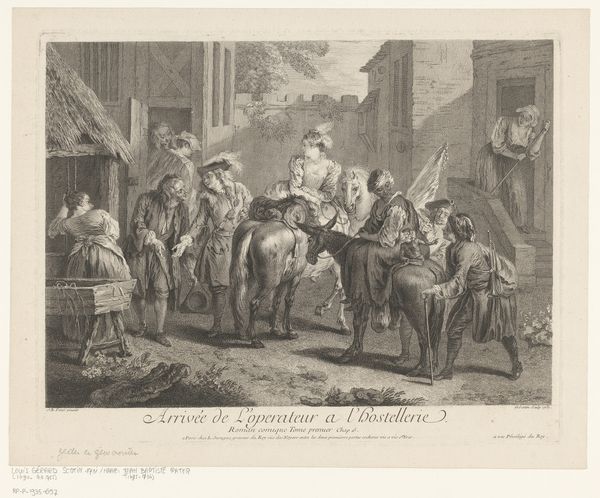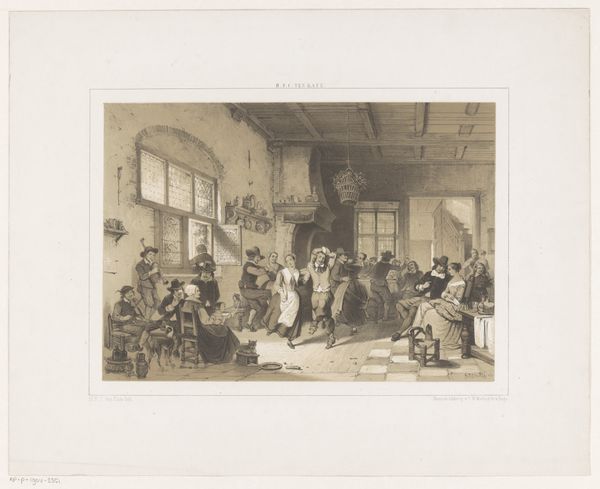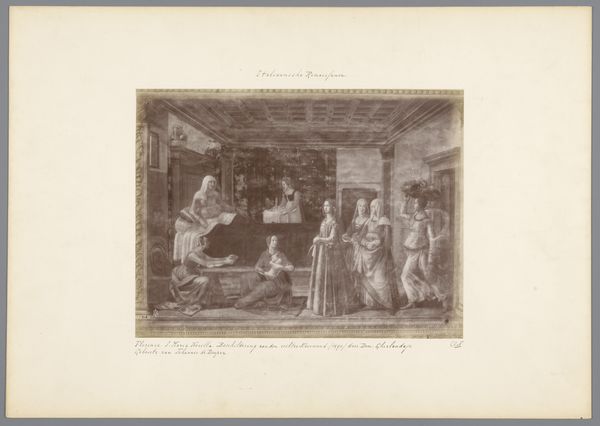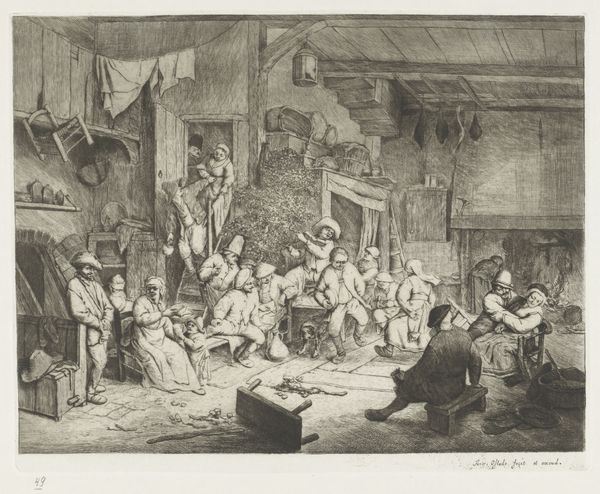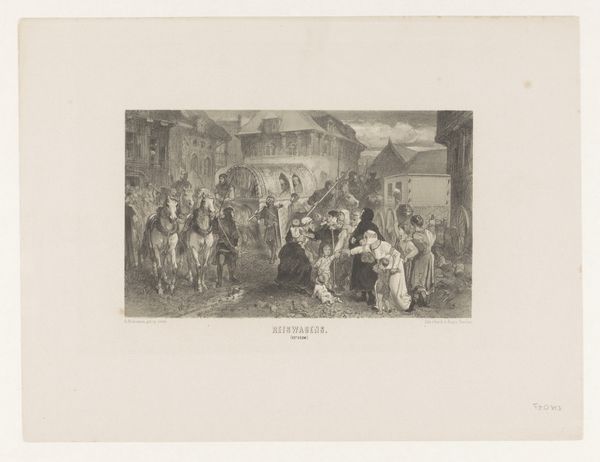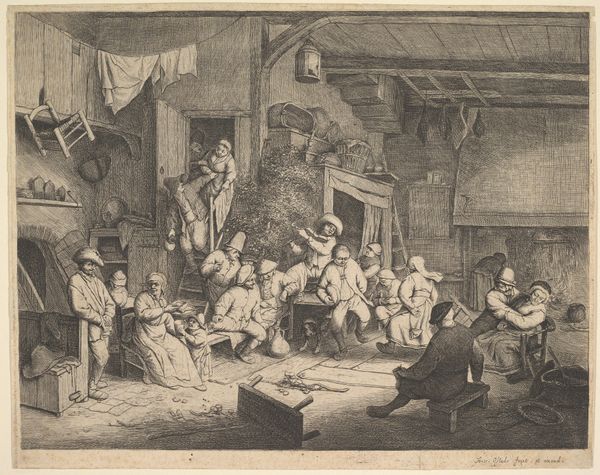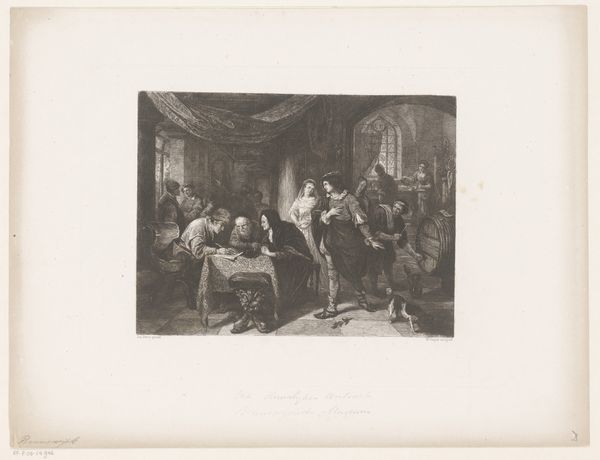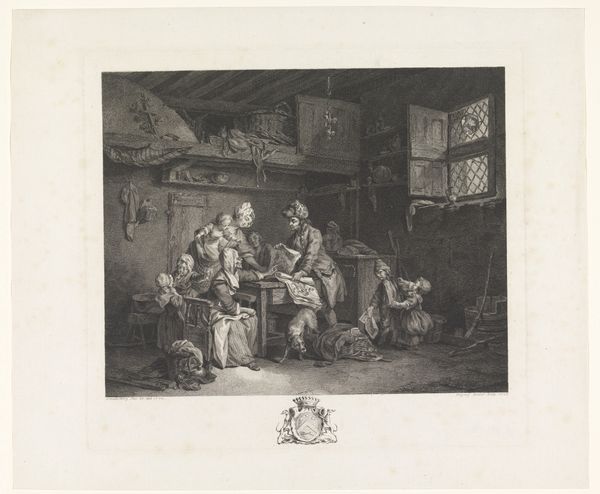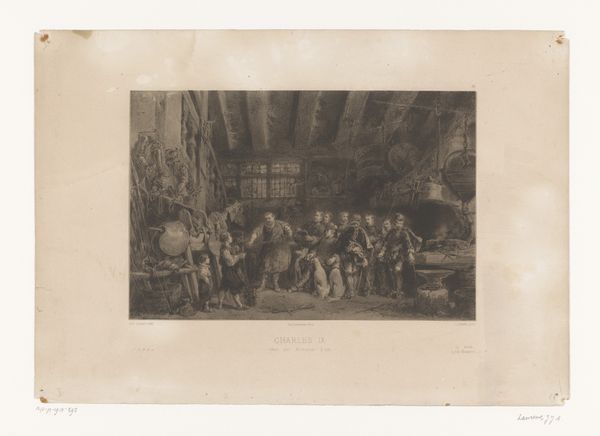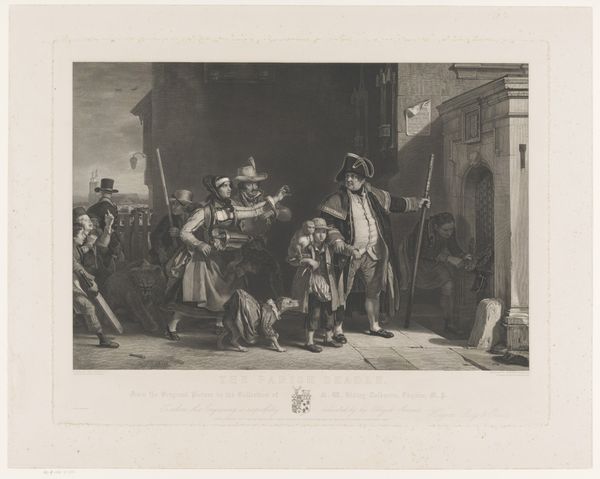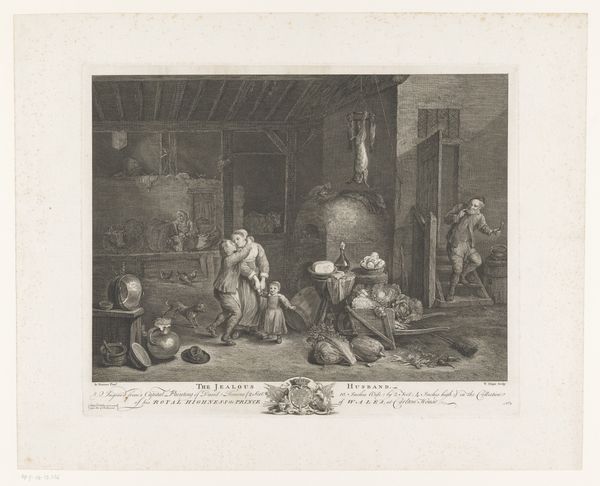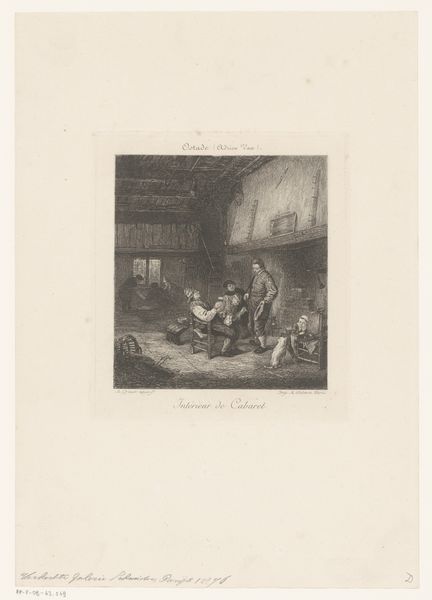
print, engraving
#
narrative-art
# print
#
figuration
#
genre-painting
#
history-painting
#
engraving
#
monochrome
Dimensions: height 209 mm, width 270 mm
Copyright: Rijks Museum: Open Domain
Editor: So, this is "Kunstenaar in een keukeninterieur" – roughly "Artist in a Kitchen Interior" – an engraving from sometime between 1822 and 1902 by Alexander Carse. The scene it depicts is quite chaotic! There are so many people in different states of action. What strikes you most when you look at it? Curator: What immediately grabs my attention is the depiction of labor, visible in both the production and consumption happening here. We see individuals engaged in various forms of work, from the creation of art—if that's what the paper suggests—to the more mundane activities of a domestic space. How does this representation of work challenge or reinforce existing class structures within the context of 19th century Europe? Editor: I hadn't thought about it that way! The man asleep at the table certainly isn’t laboring at the moment. Do you think the detail of the printmaking – the lines, the shading – emphasizes certain materials, therefore directing the viewer's gaze to them? Curator: Precisely! Notice the wood. The material from which prints are made and also depicted. The process becomes as significant as the final image. We see consumption in terms of the material - wood for fuel; food and drink on the table for sustenance - but also consumption of 'art' represented by the chaotic presentation of a 'creation' to an audience. Considering the social context of this period, with evolving capitalist economies and production practices, what statement might Carse be making? Editor: Maybe it's a commentary on the value – or perceived lack thereof – given to art and artists in comparison to more traditionally valued labor? Or maybe on the material reality that underlies all creation? Curator: Exactly. The emphasis on materials, process, and production unveils social commentaries, prompting viewers to reconsider art's position within societal constructs of labor, materiality, and worth. Editor: That's a much deeper interpretation than I initially had. I definitely see how focusing on the materials used to create the artwork changes how we interpret the meaning. Curator: Indeed! And it’s vital for any artwork with something to say!
Comments
No comments
Be the first to comment and join the conversation on the ultimate creative platform.
